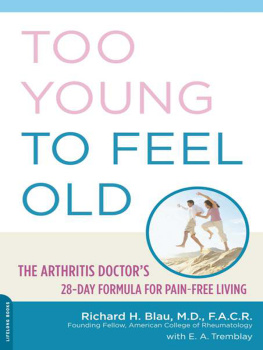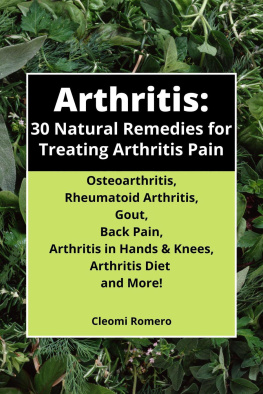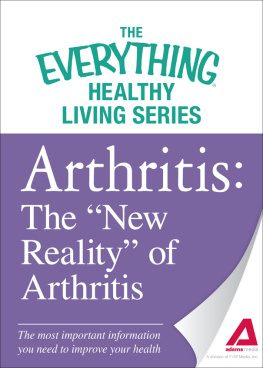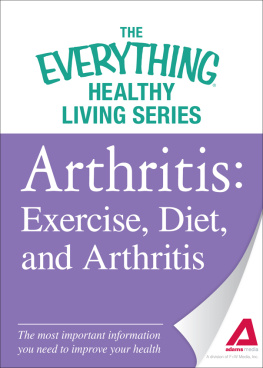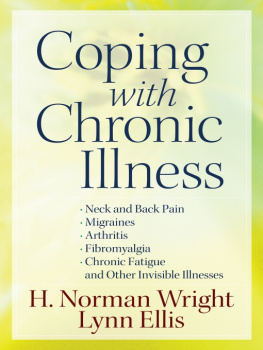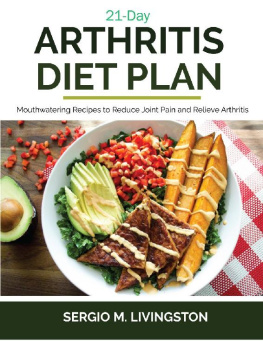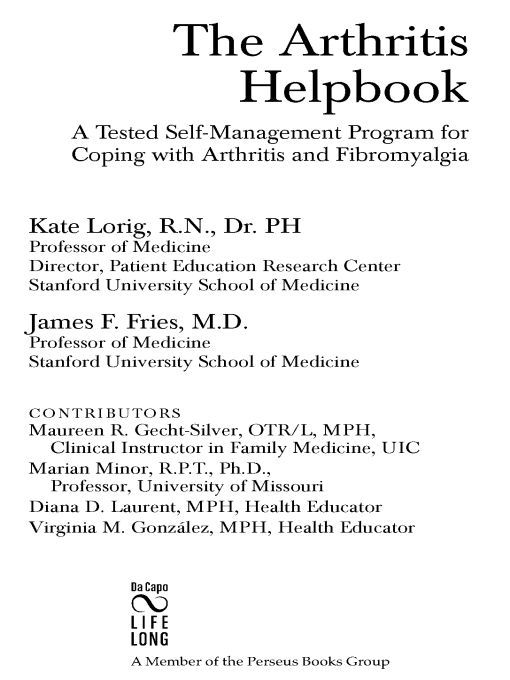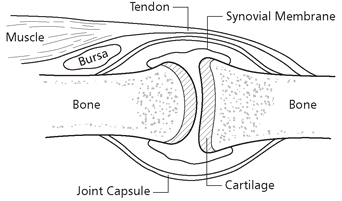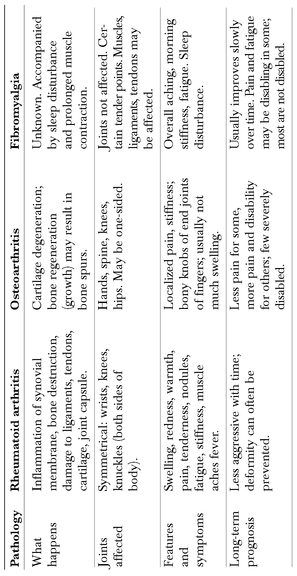Table of Contents
OTHER BOOKS BY THE AUTHORS
Arthritis: A Take Care of Yourself Health Guide by James F. Fries
Living a Healthy Life with Long Term Conditions by Kate Lorig, Halsted Holman, David Sobel, Diana Laurent, Virginia Gonzlez, and Marian Minor
Living Well: A Take Care of Yourself Health Guide for the Middle and Later Years by James F. Fries
Patient Education: A Practical Approach by Kate Lorig
Take Care of Yourself by Donald M. Vickery and James F. Fries
Taking Care of Your Child by Robert H. Pantell, James F. Fries, and Donald M. Vickery
Vitality and Aging by James F. Fries and Lawrence M. Crapo
Cmo Convivir Con Su Artritis by Virginia Gonzlez, Virginia Nacif de Brey, Kate Lorig, and James F. Fries
The Back Pain Helpbook by James E. Moore, Kate Lorig, Michael Von Korff, Virginia Gonzlez, and Diana Laurent
Living Well with HIV and AIDS by Allen Gifford, Kate Lorig, Diana Laurent, and Virginia Gonzlez
A Note to Readers
This book is not meant to replace medical care. Rather, it is a supplement to that care. Most doctors do not have the time or take the time to explain exercises or pain-management techniques to you in enough detail to help you very much. Therefore, we hope this book will assist both you and your physician. All of the advice and activities that we describe have been reviewed by many, many doctors, physical therapists, occupational therapists, nutritionists, and nurses, including the entire staff of the Stanford Arthritis Center. They represent a sound program essentially the same as that recommended by most health authorities today. If you have particular questions please talk them over with your doctor.
We would like you to feel that you are part of our cast of thousands. If you have comments or suggestions please send them to us by writing:
Stanford Patient Education Research Center
1000 Welch Road, Suite 204
Palo Alto, CA 94304
U.S.A.
self-management@stanford.edu
Your suggestions will be reviewed and considered for our next edition.
To all of you who helped in the past and whom we couldnt name, many thanks, and to those of you who are just joining, a hearty welcome.
K. L.
J. F. F.
Stanford, California
January 2006
Part I
Understanding Those Aches and Pains
Chapter 1
Arthritis: What Is It?
Arthritis. Fibromyalgia. The very words evoke a specter of fear and pain. People think of getting old, being unable to get around, and of becoming more dependent upon others. The terms carry with them a sense of hopelessness and futility. But the very opposite should be true. All arthritis and fibromyalgia can be helped.
In order to understand how to work with your condition, it is necessary to know a little about it. In fact, arthritis is not just a single disease. There are over 120 kinds of arthritis, all of which have something to do with one or more joints in the body. Even the word arthritis is misleading. The arth- part comes from the Greek word meaning joint, while -itis means inflammation or infection. Thus, the word arthritis means inflammation of the joint. The problem is that, in many kinds of arthritis, the joint is not inflamed. A better definition might be problems with the joint, or the ligaments, tendons, and muscles near the joint. Rheumatism is a broader term that encompasses all kinds of pain and stiffness in the muscles and joints.
Now that you understand what arthritis means, the next step is to understand what a joint looks like and what the various parts do.
A joint is a meeting of two bones for the purpose of allowing movement. It has the following six parts.
Where arthritis attacks.
1. Cartilage. The end of each bone is covered with cartilage, a tough material that cushions and protects the ends of the bone. To get some idea of what cartilage is like, feel the middle of your nose or your ears. These are also made of cartilage. Cartilage in meat is gristle.
2. Synovial membrane (synovial sac). Around each joint is the synovial sac, which protects the joint and also secretes the synovial fluid, which oils the joint. In fact, this fluid has many times the lubricating power of oil. Synovial fluid is a little like egg white.
3. Bursa. A bursa is a small sac that is not part of the joint but is near the joint. It contains a fluid that lubricates the movement of muscles: muscle across muscle and muscle across bones. In some ways, it is similar to the synovial sac.
4. Muscle. The muscles are elastic tissues that, by becoming shorter and longer, move the bones and thus move you.
5. Tendon. The tendons are fibrous cords that attach the muscles to the bones. You can feel them on the back of your hand or in the back of your knee.
6. Ligament. The ligaments are fibrous cords, much shorter than tendons, that attach bone to bone and make up the joint capsules.
When someone says, I have arthritis or fibromyalgia, it means that something is wrong with one or more of these parts. For example, when the synovial membrane becomes inflamed, this is true arthritis. The joint is inflamed. However, if the muscle becomes stretched from overexercise or is injured, this is not arthritis. The joint itself is not affected.
In each major kind of arthritis, a different joint part is involved. In rheumatoid arthritis, the problem is chiefly synovitis, an inflammation of the synovial membrane. This inflammation must be reduced with medication in addition to your self-management program. In ankylosing spondylitis, the problem is an enthesopathy, an inflammation where the ligaments attach to the bone. This inflammation also needs to be suppressed by medication, and the affected joints need to be regularly and vigorously stretched. In osteoarthritis, the problem is a breakdown of the joint cartilage, but it can be helped by exercise and proper use of your joints. In gout, the problem is crystals in the joint space that cause inflammation and pain. In fibromyalgia, the problem is not the joint, but the muscles and ligaments. Each kind of arthritis is different and requires different medical treatment. However, the self-management techniques are very similar for most types of arthritis.
The table on pages 6-7 gives a quick overview of the three most common types of arthritis: rheumatoid arthritis, osteoarthritis, and fibromyalgia.
If you are interested in knowing more about these and other types of arthritis, read Arthritis: A Take Care of Yourself Health Guide, by Dr. James F. Fries (Cambridge, Mass.: Da Capo Press, 1999), or contact your local Arthritis Foundation or Arthritis Society for information.
Types of Arthritis


